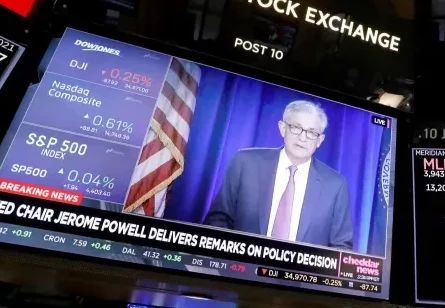
U.S. futures and European bourses tumble as investors call for higher premiums to carry sovereign bonds
The Federal Reserve (Fed) campaign against inflation weighs heavily on financial markets. On the day of the most awaited event of the week, the release of the minutes of the last meeting of the US central bank, index futures in the US and European stock exchanges decline.
The sale of sovereign bonds intensifies. The 10-year bond premium is already above 2.6%, in the 2018 and 2019 ranges, a reflection of bets that the Fed will carry out the sharpest monetary tightening in nearly three decades.
In the US, futures pegged to the Nasdaq 100 were down more than 1%. Tech giants including Twitter Inc., Microsoft Corp., and Tesla Inc., were among those with the worst performance in operations prior to the opening of the stock exchanges. In Europe, the Stoxx 600 index lost more than 1%, with the travel, auto, and technology sectors leading the way in losses.
Today, the Fed will release the minutes of the March 16 monetary policy meeting, when it confirmed the market’s forecast of rising interest rates and signaled that the monetary tightening did not stop there.
Investor expectations are high, especially after an incendiary speech by Lael Brainard, who heads the Minneapolis Fed. Brainard said the Fed will raise interest rates steadily and that it will reduce the balance sheet at an accelerated pace starting in May.
This, by the way, was the most impactful news, as investors expected a reduction in the Fed’s balance sheet for a little later. One of the ways the Fed can reduce its balance sheet, now around $8.9 billion, is to liquidate maturing bonds, rather than rolling over debt by issuing new bonds. In practice, this means withdrawing liquidity from the markets.
Soaring inflation, with the consumer price index at the highest level in 40 years, and the labor market at levels close to full employment, give the Fed arguments to endorse a more aggressive monetary policy.
“Given that the recovery has been considerably stronger and faster than in the previous cycle, I expect the balance sheet to shrink considerably faster than in the previous recovery,” said Brainard, who is awaiting Senate confirmation to be named vice president of the authority. monetary.
Investors fear that a more restrictive US central bank could end up bringing the world’s biggest economy down, even driving it into recession. The resurgence of the virus in Asia and the war in Ukraine are also clouding the outlook for prices and growth.
In addition to clues about the central bank’s next actions, today’s minutes will give an idea of the agreement between the members of the Fed, since on the one hand inflation is soaring, but on the other the war in Ukraine and covid-19 threatens. the supply of raw materials and the pace of production chains.
Dow (-0,80%), S&P 500 (-1,26%), Nasdaq (-2,26%), Stoxx 600 (+0,19%), Ibovespa (-1,97%)
The Fed’s more aggressive nod to rising interest rates led US stock markets to close in the red. The war in Ukraine has also affected operations: a new round of sanctions, in addition to a possible embargo on Russian coal, would include a ban on all new investment in Russia and other measures against financial institutions and state-owned companies.
